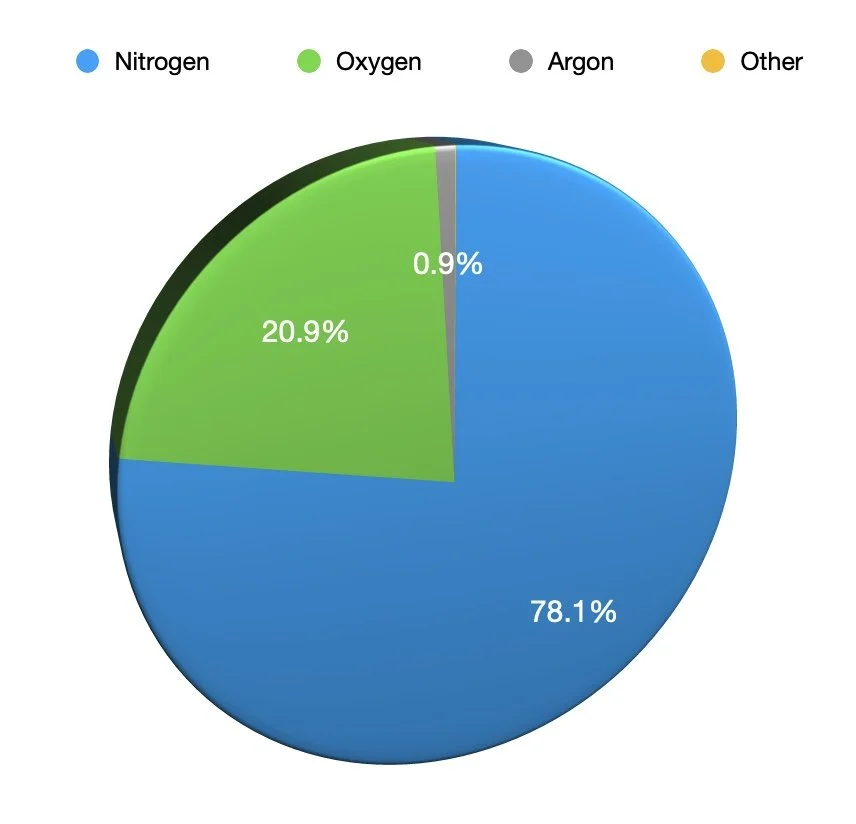Nitrogen in the Soil Boosted By Snow?
Growing up in the southern United States and coming from rural roots I heard innumerable colloquialisms, or what I referred to as ‘Old Timey Sayings’ such as An Apple a Day Will Keep the Doctor Away. As a youngster more focused on running, romping, and fishing I did not put much thought into any of the old adages. I knew what the message was, adhered to them or did not, and ran off to begin my next adventure. Now that I am returning to my rural roots and managing my own agricultural operation, I am meeting and collaborating with several other farmers who grew up with their own community colloquialisms and share them from time to time when the situation seems to call for it. One such opportunity presented itself the other day after we received a few inches of snow. One of my fellow local farmers and I were discussing my cover crop, the cold temperatures, and the insulating benefit of snow for the cover crop. As the conversation’s close drew near, the wisdom warrior piped up and said, “Ya know, my Dad always said snow was a poor man’s fertilizer”. I kind of giggled at the thought because all that came to mind for me was an influx of moisture that we desperately needed and almost blew right by this nugget as well. But then he added, “Puts nitrogen in the soil”. My interest was now piqued and my giggling subsided. Wait…what? Could that be so?
Upon researching the topic further it turns out that yes, snow does indeed bring nitrogen to the soil and it in fact does it more effectively than other natural nitrogen building phenomena. To fully explain why this is we have to first back up and understand how nitrogen cycles in the Earth’s atmosphere.
Our planet’s atmospheric gasesThe Earth’s atmosphere is made up of many gases but the overwhelming majority, over 78 percent in fact, is nitrogen (N2). As a gas in the atmosphere, nitrogen is in the form of a single molecule composed of two nitrogen atoms held together by a strong molecular bond. In this configuration, the nitrogen molecule’s molecular mass is 28.02 g/mol and remains suspended in the atmosphere due to thermal energy in a process called diffusion. The science for that is an entirely different conversation but for our purposes today, we will simplify the point to say nitrogen ‘floats’ in the atmosphere. Plants require nitrogen for growth and development but the plants absorb most of their nutrients through their roots, which are below the soil, and cannot make use of nitrogen in this form. How does this problem get resolved you ask? Nitrogen is brought down to the Earth’s surface through a process called nitrogen fixation. Nitrogen Fixation is the natural process that occurs with each lightning bolt during a weather event. The electricity released from a lightning bolt is powerful enough to break apart the strong molecular bond of the two nitrogen atoms. Once separated, the dislodged nitrogen atoms quickly attach themselves to oxygen atoms in the air forming nitrogen dioxide (NO2). Nitrogen dioxide is water soluble and combines with the humidity in the earth’s atmosphere creating nitric acid. As this process continues, the moisture levels build and eventually form water droplets which of course become rain, sleet, snow, or any other variation of precipitation. The precipitation, containing the nitrates, now have enough mass to overcome diffusion and fall to the earth’s surface in the form of precipitation bringing nitrates to the earth’s surface. Once on the earth’s surface the soil absorbs the moisture as quickly as possible and the nitrogen contained in the water is in a form that can be made useful to the plants. Once again there is a whole other science class on how plants, with the microorganisms in the soil, convert nitrogen into forms useful to vegetation. The important thing for this conversation however is that nitrogen is now incorporated into the soil and in a form the plants can absorb and use for their growth and development. Nitrogen atoms return to the atmosphere by denitrification which is a process of bacteria consuming decomposing organic material and its byproduct releases nitrogen atoms back into the atmosphere. Amazing!
So upon reflection, my giggling about the snow simply being another form of moisture was not entirely off base because indeed, the cycle of all atmospheric moisture falling to the earth does bring nitrogen with it. Where snow specifically excels with this nitrogen cycle however lies in the fact that it falls gently and remains there until absorbed by the soil. In contrast, rain often falls hard and fast creating flows of water running across the surface to drainage locations. This often causes the nitrogen, along with other valuable resources, to flow right past the plants roots and either not get absorbed at all or absorbed at a much reduced rate. So in that regard, snow is far more efficient in the atmospheric nitrogen cycle and was accurately regarded by farmers as a beneficial event for their fields.
So an old, local colloquialism finds scientific validity this time! I wonder how many other idioms have proven valid?
What is your favorite Old Timey Saying? Have you found it to be true or is it still floating around in the world of the unknown?
We refuse to monetize our blog with advertisements as we believe it ruins the reader's experience but unfortunately admin costs are real. If you find value in the content created, consider contributing to Bluegrass Blessings Farm and help support our mission of developing regenerative farms that boost the local food supply, produce quality nutrient dense food options, and protect the natural resources of our environment.
Thank you for consideration and support.



